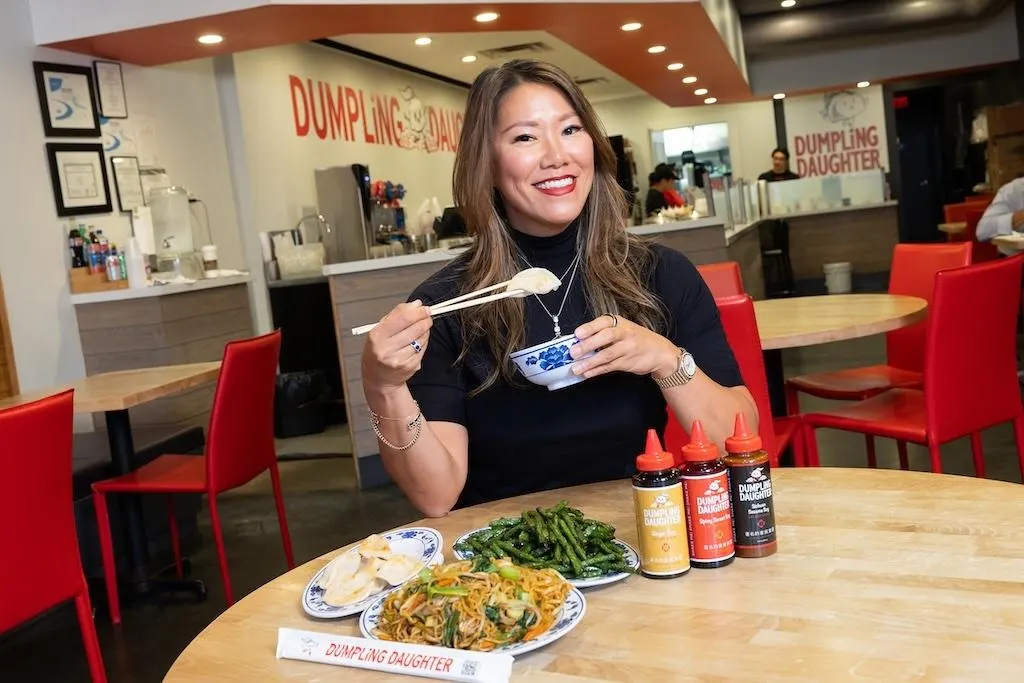Copyright forbes

CEO & Founder of Dumpling Daughter, Nadia Liu Spellman Nic Czarnecki Entrepreneur Nadia Spellman turned a love of childhood comfort food into a thriving $7 million food brand, adapting her restaurant business, Dumpling Daughter, to meet the rise in home cooking and changing consumer tastes. Her goal was always to stay true to her family’s culinary legacy, but as she has discovered, scaling nostalgia in the current economic climate is far from easy. Maintaining a food heritage Her food journey started early in life. Spellman grew up in her parents’ restaurants, which were among the most acclaimed Chinese restaurant destinations in the country at that time. “I watched Yo-Yo Ma eat dinner in our dining room and Julia Child celebrate her 80th upstairs on Boston’s waterfront,” she says. “Safe to say, my childhood wasn’t exactly ordinary.” What stuck with her wasn’t just the glamor; it was the drive, creativity, and boldness her parents delivered with their vision. “I was inspired to recreate that energy I grew up with; the buzz of the dining room, the joy of a perfect dish, the stories behind every flavor,” she says. “Food and flavors have always been my way of sharing tradition, culture, and emotion, and I feel incredibly lucky that my earliest memories were plated with so much meaning and heart.” Building a foundation After graduating from her undergraduate program, Spellman told her father that she wanted to become a consultant in the food, restaurant, and catering industries, anything that touched the world of hospitality. His response was the typical reality check that she was expecting. “He told me, ‘You’re 21. Who’s going to take advice from a 21-year-old about running a restaurant or food business?’ which I thought was fair enough,” says Spellman. “He encouraged me to get a ‘real’ job, something in finance, to build a solid foundation for any business I were to start and to learn how the corporate world feels." Financial footing Spellman entered the investment banking world as an analyst in New York City, and while analyzing comparable company sets and doing WACC calculations, her deep dives often involved scouting new restaurants and saving recipes to try over the weekend. “There was no denying where my passion lay, and being in a role I didn’t love only fueled my desire to pursue my passions,” she says. MORE FOR YOU Between M&A reports and financial modeling, she began jotting down food business ideas and dreaming up restaurant concepts. There were two things she knew for certain: she wanted to be her own boss, just like her parents, and she planned to build something in food, somehow, someday. “Finance may have paid my rent, but food always had my heart,” she says. Launching Dumpling Daughter Spellman was just 27 when her father died, but with the $60,000 he left her, along with two loans from two important mentors in her life, she opened her first Dumpling Daughter restaurant in Weston, Massachusetts, in 2014. In the first few weeks, she ran herself ragged, watching every dish leave the kitchen, talking to every guest, constantly scanning the dining room over people’s shoulders. “I was in survival mode, too focused on every detail to even process the magic of a new and busy restaurant as a whole,” she says. During that chaotic time, several successful investors and entrepreneurs came into the restaurant. “One by one, they pulled me aside and told me the same thing: there’s something really special happening here,” she says. “Looking back, those early cheerleaders gave me the confidence I didn’t yet have in myself as a business leader and creator. Their belief planted the seed that this wasn’t just a single restaurant; it could be something much bigger.” Investing in the founder According to Andrew Spellman, founder and CEO of Fifth Down Capital, what initially convinced him to invest in Dumpling Daughter was its founder. He says: “We believe the product is exceptional, but it’s Nadia’s combination of authenticity, innovation and brand instinct that compelled us to invest. We believe Dumpling Daughter can become a mainstream Asian-American comfort food brand with an authentic product that tastes great, is nutritious and craveable.” Dumpling Daughter began as a market test to see whether Western diners would embrace dumplings as a main meal, as they are traditionally enjoyed in Chinese culture. A positive response to the first location encouraged founder Nadia Spellman to open three more. But as economic conditions impacted the industry, and consumers tightened their budgets, choosing home-cooked meals over dining out, Spellman made the strategic decision to close two of the restaurants. Focus on dine-at-home She steered the brand toward food service, partnering with distributors such as Sysco and Chef’s Warehouse, and increasingly toward retail. Today, Dumpling Daughter’s frozen products and sauces are sold online via Amazon, Williams Sonoma and the company’s own website. The brand’s retail footprint includes Sprouts, H-E-B, Wegmans, Roche Bros., Market Basket, Costco, BJ’s, Fresh Market, DeCicco’s, and Harris Teeter, as well as numerous smaller gourmet chains and specialty markets. Danna Robinson, director of corporate affairs and customer relations at Harris Teeter, says: “We’ve seen a growing interest in authentic, global flavors and easy-to-prepare meal solutions and Dumpling Daughter fits perfectly within that trend. What really stood out to us, though, is Nadia’s story and her passion for sharing the flavors that she grew up with. She’s built a brand that brings people together through food, and that spirit aligns perfectly with what Harris Teeter aims to provide our customers: access to high-quality, inspired products that are as meaningful as they are delicious.” Harris Teeter has already expanded distribution to include innovations introduced by Dumpling Daughter this year. The plan is to continue building brand presence and visibility to further fuel growth. “We see this as the beginning of a long-term collaboration, one that continues to bring innovation, cultural authenticity and great taste to our customers,” adds Robinson. Spellman’s vision for Dumpling Daughter, which now generates an annual revenue of around $7 million, is bigger than ever. She says: “The decision to close two restaurants came after thoughtful evaluation of evolving consumer habits and the brand’s long-term vision. By doubling down on our CPG (consumer packaged goods) strategy, we are aiming to meet growing consumer demand while staying true to the authenticity, family heritage, and bold, homestyle flavors that have defined the Dumpling Daughter brand from day one.” Editorial StandardsReprints & Permissions



